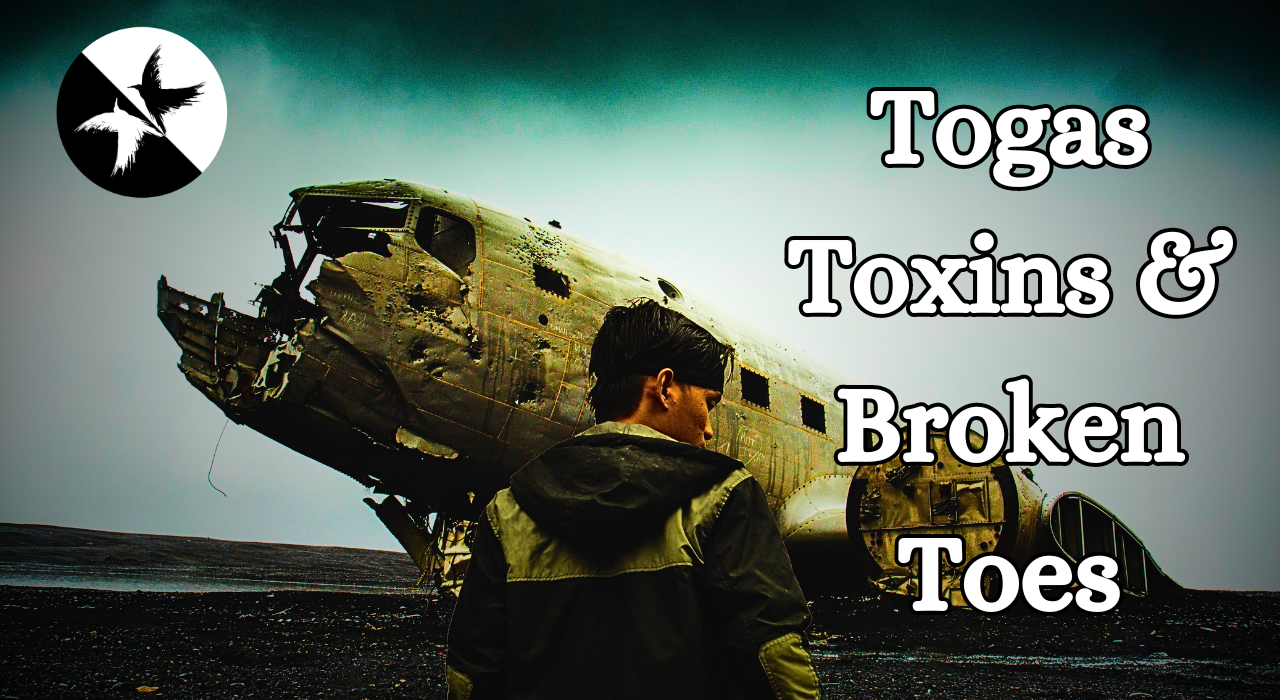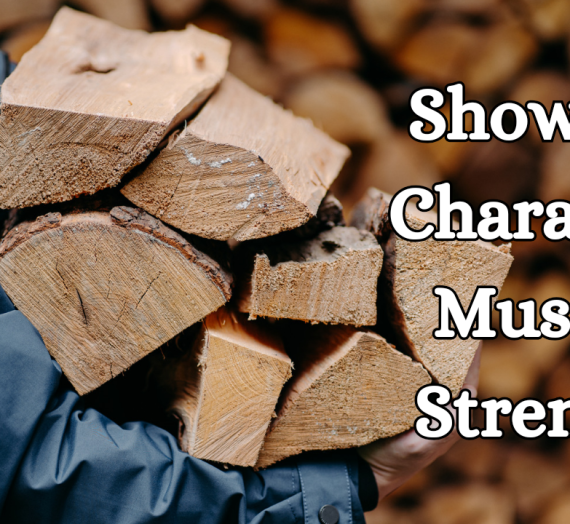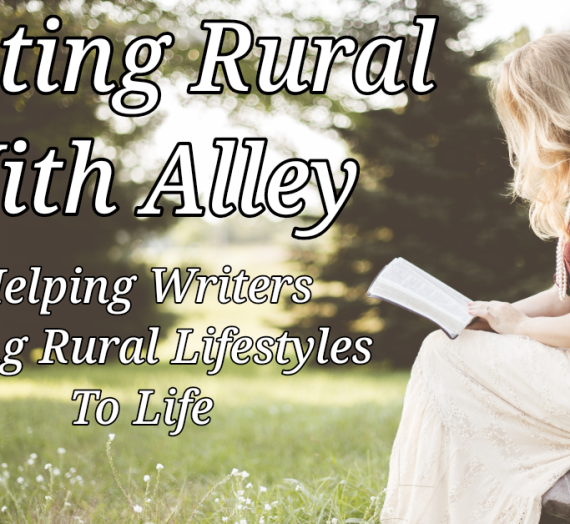If your character needs to find people to get help after a disaster, what should they do? Can fruit be toxic? What about mountain lions? Find out on this episode.
Welcome to Writing Rural with Alley, the fiction writer’s weekly inspiration station for rural life and lifestyles, from historical to post-apocalyptic, helping you bring your rural stories to life! I’m Alley, and this is episode #61, Top Disaster Survival Skills (Part 2). Stick around to the end to find out all the ways things could possibly go wrong. Now, let’s get into this.
If your character finds themselves in a disaster, whether it is a natural disaster or man-made, there are skills they will need to survive, and some that will make survival much easier. Your character may have these skills, or it could be someone with them. Either way, today, we will cover five more of them.
6) Knot Tying
Knot tying is a skill that is very useful in a disaster. This is for many reasons. The first being impromptu ways to make a first aid sling, tie bandages if needed, and things along this line.
The most widely known use is for lashing things together. This could be the framework for a lean-to, roundhouse frame (basically the form of a teepee made entirely of sticks), a debris shelter, a tent made of a tarp or canvas, and many more shelters.
However, this could be important for other reasons. These include finding uses to better carry or haul supplies, water, food, babies, injured people, and more. If your character was asleep without shoes when a tornado or earthquake happened, they might need to finagle some impromptu shoes. They can make cloth dresses or togas out of blankets or tablecloths. There are many more things and the possibilities are far too many to list them all here.
7) Navigation
Navigation makes this list as something your character will probably need to do if they are in the wilderness or just moving on foot from one location to another that is not nearby. This can be done many ways.
The oldest method I can think of is following the north star or using it as their guide. This has been done in thousands of cultures for as long as humans have been alive. While almost everyone can find the North Star, a few, myself included, can’t. I have been told and shown hundreds of times and still lose it by the next night. I don’t know why; I just do. This is fairly rare and something most people only hear about. I have never met another person who can’t.
The next one is just as old and is to check direction with the sunrise and sunset. The sun always rises in the east, and sets in the west. It is the same everywhere in the world and is known by basically everyone.
Many people have a modern compass or can make them with a magnet and sewing needle. If fact, it is taught in the schools in my area. While I call them modern, the compass was actually invented in about 206 BC in China during the Hun dynasty.
Other navigation methods include following far-off landmarks, making a shadow compass with sticks, using star constellations, the moon’s shadow, an analog watch, and more.
There are many reasons your character might need to know the direction they are going. They want to avoid bad guys or stay ahead of them as they get to a place they know, or at least hope, is safe. They are looking for people. This could include family, friends, or someone they are being paid to find.
A side note: if your character is trying to find people in general, they should follow a river or stream they find in the wilderness. People need water to survive. It is likely that if they follow it long enough, they will eventually find people.
8) Plant identification (AKA Foraging)
If your character is trapped in the wilderness or runs out of food in the apocalypse, they will need to find food. That is called foraging. However, picking random plants to snack on is a recipe for a new disaster. Some plants are toxic, and others, like poison ivy, cause allergic reactions. I promise your character does not want hives in their throat. I’ve had hives in my throat (not because of plants but a food allergy) and it is not only hard to breathe and swallow, but your throat hurts and itches at the same time. You can’t exactly scratch the inside of your throat.
Knowing what plants are safe to eat and which are deadly can be the difference between life and death for your character. Knowing which berries can kill and which are safe is important.
Also, some plants are safe to eat at certain times in their growth and not safe in others. I grew up eating the leaves of the poke plant until the plant started to turn purple on the stems. It is not safe to eat at that point. A mandatory warning: According to WebMD and several other official places, poke is deadly, and will kill you if you eat any of it at any time. So this is a do as I say not as I do topic.
There is also a difference between some fruit trees. Many ornamental fruits are poisonous or toxic to eat. It can be challenging to tell the ornamental ones from the none ornamental if you have not planted them yourself. If your character is unsure, they should not eat it, or they might regret it.
9) Tracking
Tracking is a skill that is often thought about with hunting. However, there are other useful ways to use it after a disaster. First, if your character follows deer tracks long enough, they will probably come to a water source. It isn’t a guarantee, but everything has to drink sometime.
Another good use is to avoid predators in the woods. If they see mountain lion prints and ahead is a rocky outcrop, they will likely know it should be avoided. The same can be applied to two-legged predators. (That means bad guys.) If they know they are bad guys who created the disaster, they will want to avoid contact with them.
Although, if they are trying to find people, following the tracks from a river to a village would be a good way to find people if they needed help. Maybe for themselves or to take help back to injured characters.
10) How to make traps
Ok, maybe you saw it coming. If your character has tracking skills, they likely know where the game is. Game is just the word for wild animals they will eat. If your character knows how to make traps, they have a chance of catching meat. Meat is vital for our health, as protein is not the easiest thing to get enough of when modern food options do not exist or are scarce.
Traps can catch small game such as squirrels, rabbits, opossums, raccoons, etc. To medium-sized game such as foxes, bobcats, coyotes, lynxes, and more. If they are lucky and know the right kind of trap to make, they can even catch larger game, such as deers and mounting lions. Ok, I hear some of you yelling, but this is fiction. The animals are not real, and I guarantee starving people rarely care. Remember that some of these are illegal to hunt in areas of the world. Will it be illegal when your character does? Only you can decide that.
A last note on this one. If your character doesn’t have a way to refrigerate the food and doesn’t know alternative meat preservation techniques, they will not want to trap big game or too many. While many people think they would hunt deer, that’s seventy or more pounds of meat. They can’t eat it in one setting. If they catch one, there is a good chance the extra meat will go bad before they can eat it. This would be very disheartening.
Fun fact: The northern star is only visible in the northern hemisphere.
What could possibly go wrong?
Before we get to the best part, if you enjoy this podcast, I hope you’ll take a minute to follow, rate, and review on your podcasting platform. And if you are listening on YouTube, subscribe, hit the like button, and drop me a comment; I love to hear from you! You can also find episode show notes and helpful links to learn more on my website, alleyhart.com. That’s A-L-L-E-Y-H-A-R-T.com. Don’t forget to share with a friend. Now for everyone’s favorite part!
Likely to go wrong: Your character does not know how to tie any knot except for their shoes when they are faced with making a lean-to after a disaster. They do not make the ropes tight enough, and in the night, their shelter collapses on them.
Likely to go wrong: Your character has grown up with the Northern Star and knows what it is. However, they are in the southern hemisphere when disasters strikes. They do not know why they can’t see the north star and have problems navigating.
Possible to go wrong: Your character misidentified a plant and eats it. This could be deadly.
Possible to go wrong: Your character misidentifies poison ivy as a safe plant and uses it to wipe after going to the bathroom in the woods. This could get very itchy.
Possible to go wrong: Your character thinks they know what some berries in a small shrub are. Little do they realize that this is a look-alike plant. They only eat a few before they start vomiting.
Unlikely to go wrong: Your character thinks they are following the North Star to get home. However, in reality, they do not know which one is the north star, and they follow a different star every night, leaving them moving in circles.
Unlikely to go wrong: Your character finds tracks outside their camp one morning and thinks they belong to a large dog. However, the tracks really belong to a mounting lion. This could lead to a scary encounter or even be deadly.
Unlikely to go wrong: Your character sets a trap for a deer. Unfortunately, the trap catches an unsuspecting person. This could cause them serious injuries or even be deadly.
Improbable but still technically in the realm of possibilities: Your character is a bad guy tracking a group of people after they survived a disaster your character made. However, they do not know a false trail when they see it, and walk right into a trap set by the survivers. This could be deadly.
Improbable but still technically in the realm of possibilities: Your character makes a deadfall trap with a large rock. As they set the trap, they do not balance it right, and the rock falls on their foot, breaking it.
Improbable but still technically in the realm of possibilities: Your character is following a landmark. However, they were more injured than they realized in the disaster, and they are following a hallucination caused by their injury.
Thanks for listening! Until next time, happy wordsmithing.
Helpful Links To Learn More:
Navigating:
https://www.nationalgeographic.co.uk/2017/03/7-ways-navigate-naturally
Tracking:
Traps:
https://www.outdoorlife.com/how-build-trap-15-best-survival-traps/




